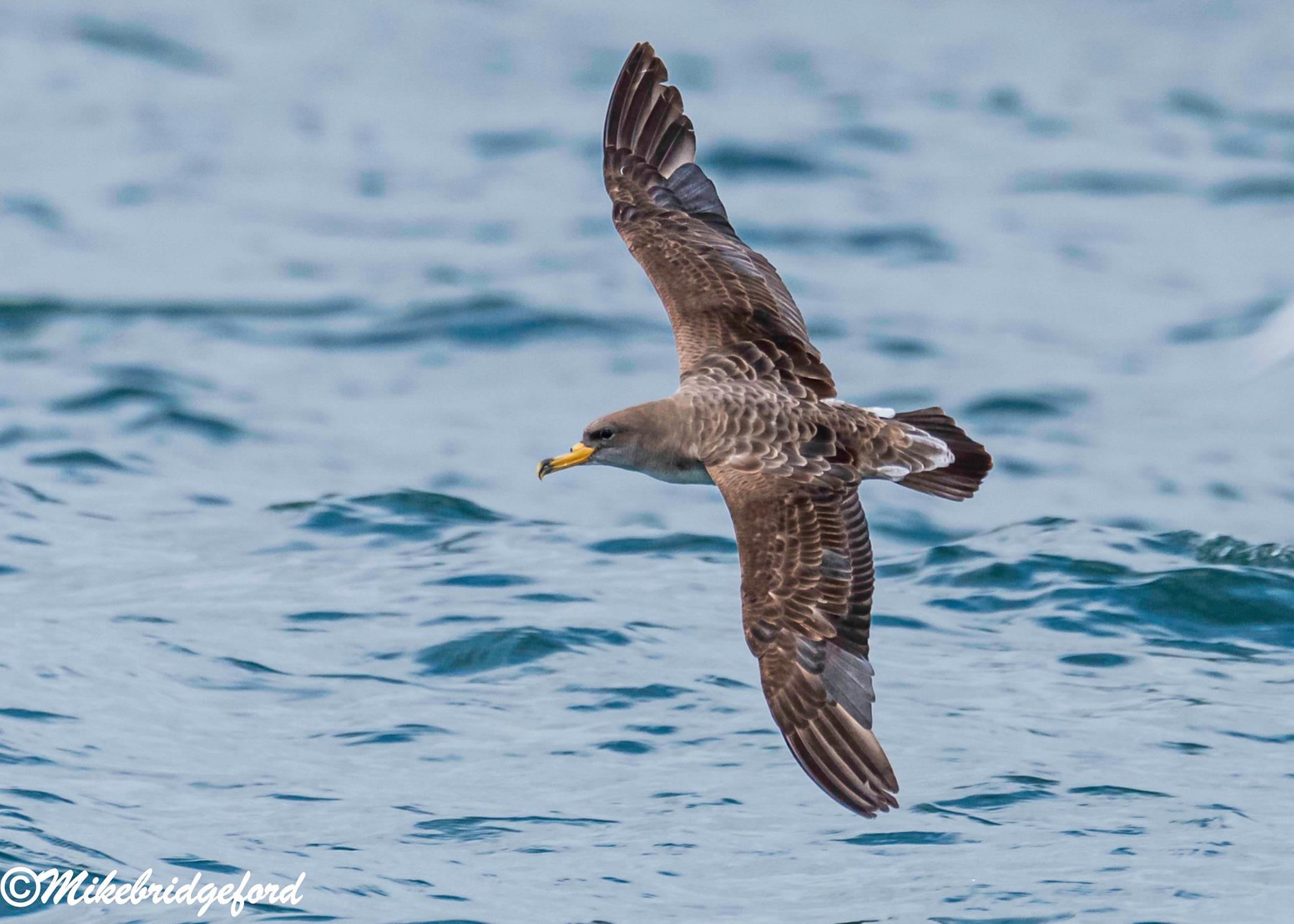
Cory’s Shearwater exhibiting primary moult, photograph by Mike Bridgeford
Letizia Campioni (Marine and Environmental Sciences Centre, Instituto Universitário de Ciências Psicológicas, Sociais e da Vida, Lisboa, Portugal) and colleagues have published in Ibis International Journal of Avian Science on relationships between moult and breeding in Cory's Shearwaters Calonectris borealis.
The paper’s abstract follows:
“Migratory birds must fit three costly life-history events within the annual cycle, reproduction, moult and migration, to minimize their overlap and maximize survival and breeding success. However, some seabirds, such as Cory's Shearwater Calonectris borealis, overlap body moult and breeding, with flight feather renewal occurring in late chick-rearing. In contrast, the moult patterns of non-breeding adult (sabbatical) and immature Cory's Shearwaters, which also attend the colony during the breeding season, remain poorly understood. Furthermore, the potential implications of life-stage and breeding status trade-offs on moult status and colony attendance in non-breeders has rarely been investigated. Surveying different areas within one colony between June and September 2013 and 2014, we studied the age and breeding status composition of birds attending the breeding colony and scored moult of their body (breast and upper-neck), wing and tail feathers. We found that in addition to breeders (n = 165), 57.6% of the birds (n = 389) attending the colony were 4- to 10-year-old immatures (n = 132) and adult sabbatical shearwaters (n = 92). Sabbaticals and 8- to 10-year-old immatures (n = 28) were present at the colony during incubation, whereas only three sabbatical birds and no 8- to 10-year-old immatures were captured in late chick-rearing. Conversely, 4- to 7-year-old immatures arrived later in the season but were still present in late chick-rearing. Sabbatical and 8- to 10-year-old immatures were moulting body feathers at the same time as adult breeders, whereas, among 4- to 7-year-old immatures, older birds moulted earlier than younger birds. A larger proportion of sabbatical birds were replacing tail feathers compared with adult breeders. However, there was no evidence that sabbaticals or 8- to 10-year-old immatures differed in wing moult from adult breeders until August. Overall, our study shows that colony attendance by non-breeding adults and immatures is widespread in this population. The synchronous moult schedule of flight and body feathers across age groups at different life-history stages may suggest that this aspect of moult is controlled by environmental conditions."
Reference:
Campioni, L., Roda, S.B., Alonso, H., Catry, P. & Granadeiro, J.P. 2023. Colony attendance and moult pattern of Cory's Shearwaters (Calonectris borealis) differing in breeding status and age. Ibis International Journal of Avian Science doi.org/10.1111/ibi.13291.
15 February 2024

 Français
Français  English
English  Español
Español